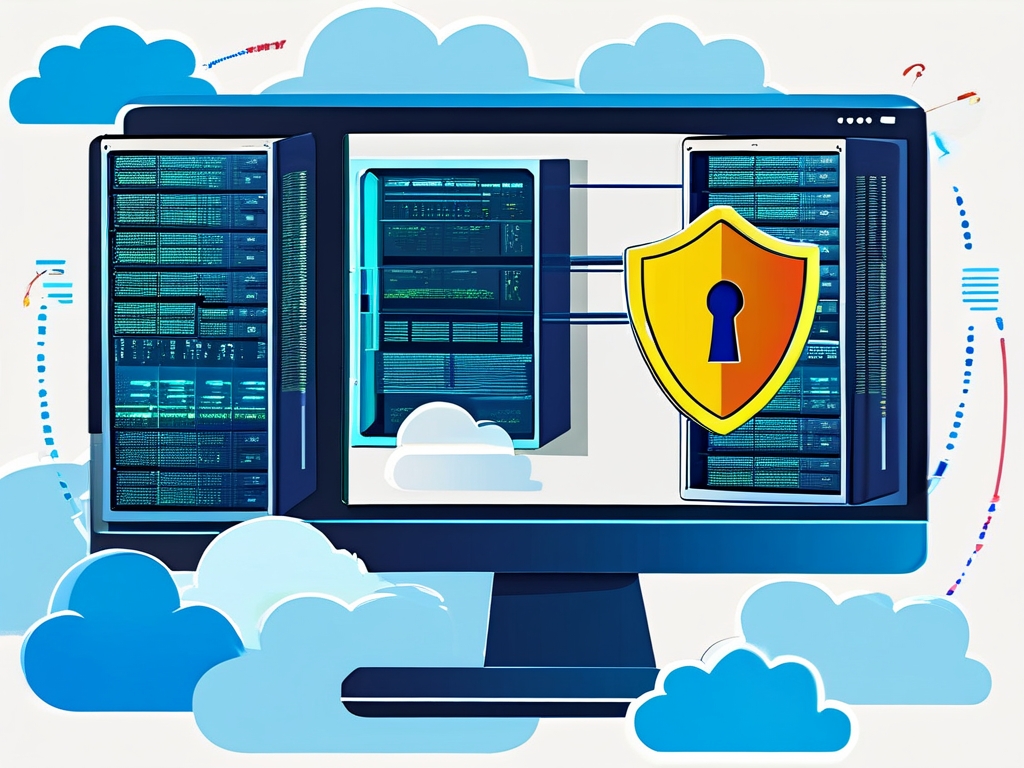As organizations increasingly adopt hybrid cloud architectures to balance flexibility and control, questions about security and reliability dominate technical discussions. This article explores critical factors determining the safety and stability of hybrid cloud environments while addressing common misconceptions.
The Security Paradox in Hybrid Systems
Hybrid cloud's combination of private infrastructure and public cloud services creates unique security challenges. While private data centers offer controlled environments, public cloud components introduce external attack surfaces. However,this blended model also enables security advantages unavailable in single-cloud setups.
Encrypted data segmentation forms the backbone of secure hybrid architectures. By implementing AES-256 encryption for data at rest and TLS 1.3 for in-transit information, organizations create multiple security layers. A 2023 IBM study revealed that properly configured hybrid systems reduce breach risks by 43% compared to exclusively public cloud deployments.

Access management represents another crucial element. Multi-factor authentication (MFA) combined with role-based access controls (RBAC) limits exposure across environments. Consider this code snippet for cross-cloud identity management:
def enforce_access_policy(user, resource):
if user.group == 'admin' and resource.env == 'hybrid':
return hybrid_admin_policies.apply()
elif user.auth_level >= 2:
return default_access_grant()
else:
raise SecurityException("Unauthorized access attempt")Reliability Through Redundant Design
Hybrid cloud's reliability stems from its distributed nature rather than despite it. By maintaining mirrored workloads across on-premise servers and multiple cloud zones, organizations achieve uptime percentages exceeding 99.995%. The key lies in implementing intelligent failover mechanisms.
Automated health checks and traffic rerouting algorithms prevent single points of failure. A well-designed hybrid system can shift computational loads between environments within milliseconds of detecting performance degradation. Cloud providers now offer native tools like AWS Route 53 failover routing that integrate seamlessly with private infrastructure through API gateways.
Disaster recovery capabilities showcase hybrid architecture's reliability advantage. While traditional data centers require physical backups, hybrid systems enable real-time replication across geographical regions. During the 2022 Azure East US outage, companies using hybrid configurations maintained operations by automatically failing over to on-premise resources and alternative cloud regions.
Emerging Challenges and Solutions
Despite these strengths, hybrid environments demand sophisticated monitoring. Security teams must track activity across multiple platforms using unified dashboards. Tools like Splunk Hybrid Cloud Observability correlate logs from diverse sources to detect anomalies that might escape single-environment monitoring.
Compliance complexity remains a significant hurdle. Different jurisdictions impose varying regulations on data stored in public vs private infrastructure. The European Union's GDPR versus China's CSL requirements illustrate how hybrid architectures require granular data governance policies. Successful implementations use metadata tagging systems to enforce location-specific rules:

CREATE DATA GOVERNANCE RULE
AS SELECT data_type,
CASE
WHEN sensitivity = 'high' THEN 'private_zone_only'
WHEN origin_country = 'EU' THEN 'gdpr_compliance'
ELSE 'standard_encryption'
END AS storage_policy
FROM digital_assets;Future-Proofing Hybrid Infrastructure
The evolution of confidential computing and homomorphic encryption will address current hybrid security concerns. Technologies like Intel SGX enclaves enable secure processing of sensitive data in public cloud environments without decryption. Meanwhile, quantum-resistant algorithms under development at NIST promise to safeguard hybrid systems against future cryptographic threats.
Reliability enhancements focus on predictive maintenance through machine learning. By analyzing historical performance data across hybrid components, AI models can forecast hardware failures in private data centers or predict cloud service disruptions days in advance.
Hybrid cloud architecture proves both secure and reliable when implemented with proper design principles and modern tools. Its unique combination of controlled infrastructure and scalable cloud services creates a defensive matrix that surpasses single-environment solutions. As attack vectors evolve and uptime requirements intensify, the hybrid model's adaptive nature positions it as the most viable enterprise infrastructure strategy through 2030 and beyond. Success ultimately depends on continuous security validation, cross-environment automation, and workforce training in hybrid management practices.








